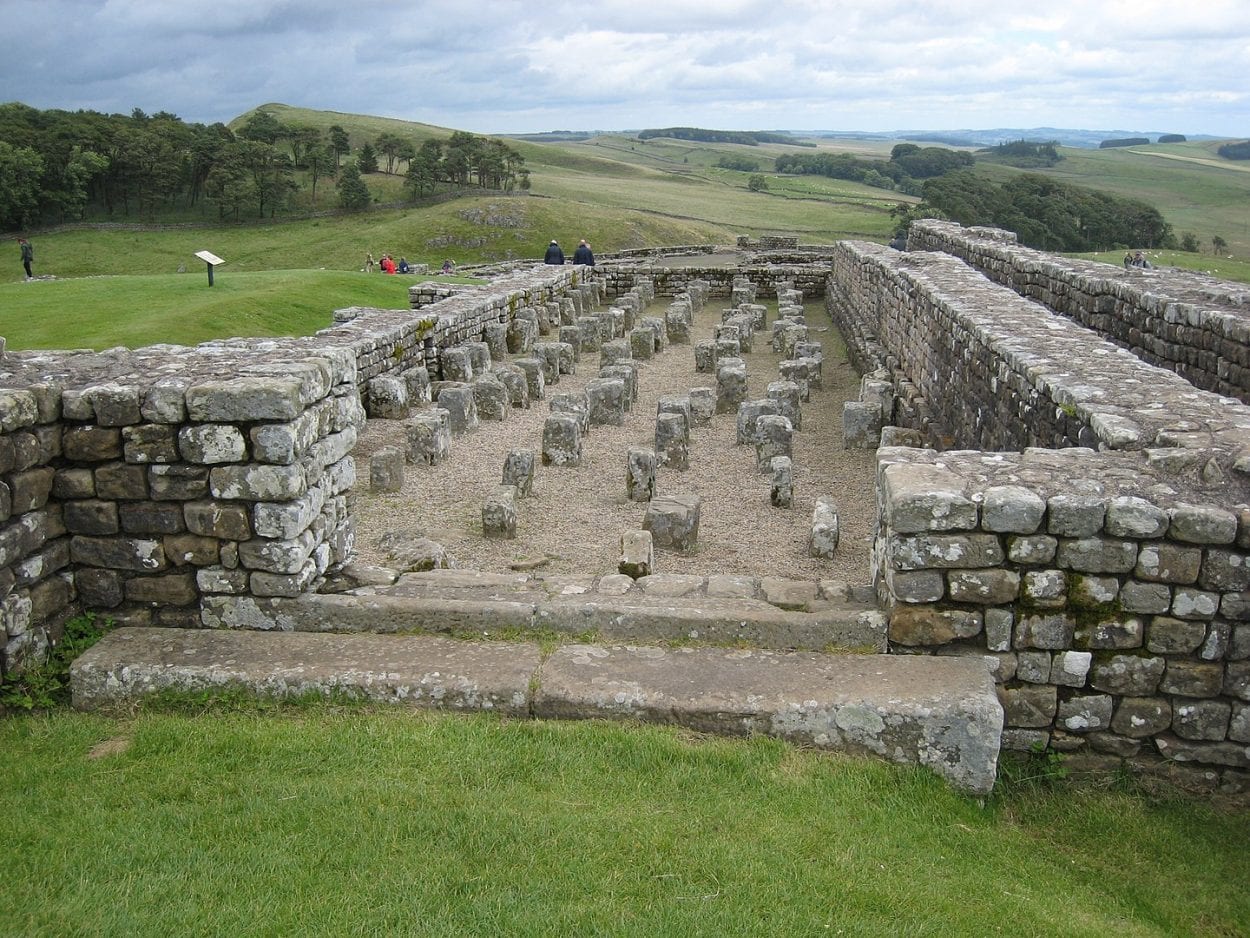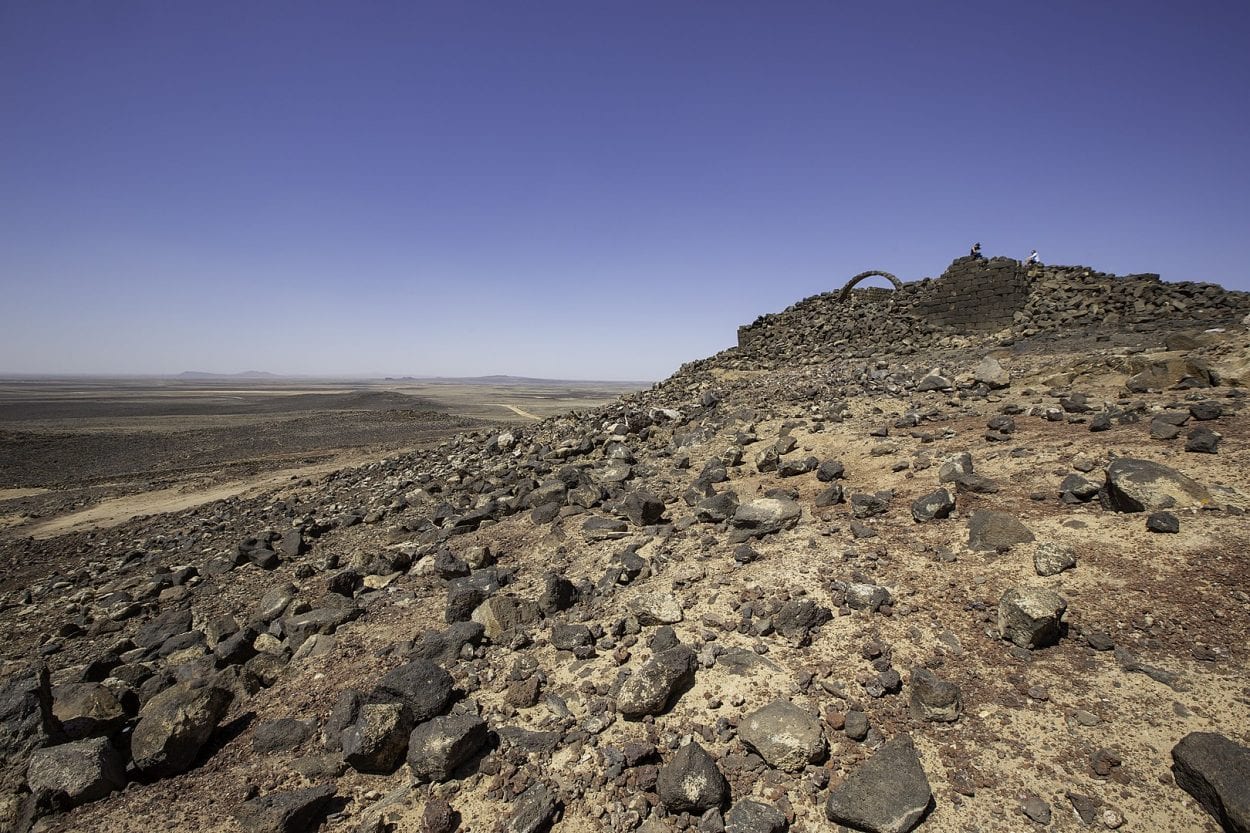Roman military borders and fortifications were part of a grand strategy of territorial defence in the Roman Empire.
Forts, Castra and military camps stretched across the vast empire, in concentration on the borders and in some of the most remote of locations to enforce Roman authority and control.
1 – Qasr Bashir / Mobene
Qasr Bashir / Mobene is located on the Limes Arabicus, a desert frontier of the Roman Empire, in the province of Arabia Petraea (Modern day Jordan). Qasr Bshir belongs to a chain of forts and watchtowers that the frontier was meant to protect against roaming desert nomads. Home to an auxiliary cavalry unit, an inscription at the fort dates the construction from AD 293-305. Abandonment occurred around the 5th century.

2 – Ain Umm el-Dabadib
The third- to fourth-century A.D. Roman fort of Ain Umm el-Dabadib was built near the el-Kharga Oasis in Egypt on an ancient route to the Dakhla Oasis. The broad flat wadi in which Ain Umm el-Dabadib stands was crossed by at least three ancient tracks, offshoots of the Darb Ain Amur. Four massive rectangular towers marked the corners of the fort, making it architecturally different to any other fortress in Kharga Oasis (which had rounded towers), suggesting that it may have been a later construction. The tallest of the el-Dabadib towers, on the south-western corner, still contains remains of a spiral staircase and rises to a height of about 15m.

3 – Hardknott Roman Fort
Hardknott Roman Fort / Mediobogdum, is located on the western side of the Hardknott Pass in the English county of Cumbria (formerly part of Cumberland). The fort was built on a rocky spur giving a superb view over the River Esk in both upper and lower Eskdale, and protecting Hardknott Pass. Built between about 120 and 138, the fort was abandoned during the Antonine advance into Scotland during the mid-2nd century.

4 – Isca Augusta
Isca Augusta, also called Isca Silurum, and Carleon Roman Fortress was a large legionary fortress located in present-day Carleon, Wales.
Isca Augusta was founded around AD 74 by the then governor of Britain, Sextus Julius Frontinus, to support the Roman campaigns in subjugating the native tribes of Wales that had resisted Roman rule.

5 – Camp F / Silva- Masada
Camp “F”, also called “Silva” (Named after the Roman commander) is located on the north side of a series of fortifications at Masada in Israel. In 72, the Roman governor of Judea, Lucius Flavius Silva, led Roman legion X Fretensis, a number of auxiliary units and Jewish prisoners of war, totalling some 15,000 men and women (of whom an estimated 8,000 to 9,000 were fighting men) to lay siege to the 960 people in Masada. The Roman legion surrounded Masada with a wall and series of forts, before commencing construction of a siege ramp against the western face of the plateau, moving thousands of tons of stones and beaten earth to do so.

6 – Tomen y Mur
Tomen y Mur is a Roman fort complex in Gwynedd, Wales. The fort was constructed under governor Gnaeus Julius Agricola in AD 78, and was abandoned around AD 140. A millennium later in the Norman period, the site was reoccupied and refortified with a motte within the old walls. The fort’s purpose was to maintain order amongst the remnants of the Ordovices (native peoples of central and NW Wales) and protect road communications in what was, at least initially, a dangerous and lawless area for the Romans. The timber fort founded by Agricola probably housed a cavalry unit of 1000. It was subsequently reduced in size and rebuilt in stone to accommodate 500 infantry in the early 2nd century.

7 – Charax
Charax is the largest Roman military settlement excavated in the Crimea (Ukraine) and one of the most distant outposts of the Roman Empire, it was sited on a four-hectare area at the western ridge of Ai-Todor. The fort was founded under Vespasian with the intention of protecting Chersonesos and other Bosporean trade emporiums from the Scythians. By the end of the 1st century AD, the Roman forces were evacuated from the peninsula. Several decades later the fort was restored by a vexillatio of the Legio I Italica; it hosted a detachment of the Legio XI Claudia at the end of the 2nd century. The fort was abandoned by the Romans in the mid-3rd century.

8 – Housesteads
Housesteads Roman Fort is the remains of an auxiliary fort on Hadrian’s Wall on the Empires frontier in Britannia (England). The fort was built in stone around AD 124, soon after the construction of the wall began in AD 122. In the 2nd century AD, the garrison consisted of an unknown double-sized auxiliary infantry cohort and a detachment of legionaries from Legio II Augusta. In the 3rd century, it comprised cohors I Tungrorum, augmented by the numerus Hnaudifridi and the cuneus Frisiorum. The Tungrians were still there in the 4th century, according to the Notitia Dignitatum. By AD 409 the Romans had withdrawn.

9 – Aquis Querquennis
Aquis Querquennis was a Roman fort in Spain, built during the reign of Vespasian (AD 69-79) and abandoned approximately in the year AD 120. The fort was occupied by a subordinate military detachment of the Legio VII Gemina, with their primary headquarters being located in León.

10 – Qasr Aseikhim
Qasr Aseikhim are the Roman ruins of a frontier outpost or fortlet near the Azraq Oasis in the Jordanian desert. The site has remained fairly well preserved due to its isolation, this same remoteness has left Qasr Aseikhim also un-excavated to date by archaeologists and has more recently come under threat from vandalism.








